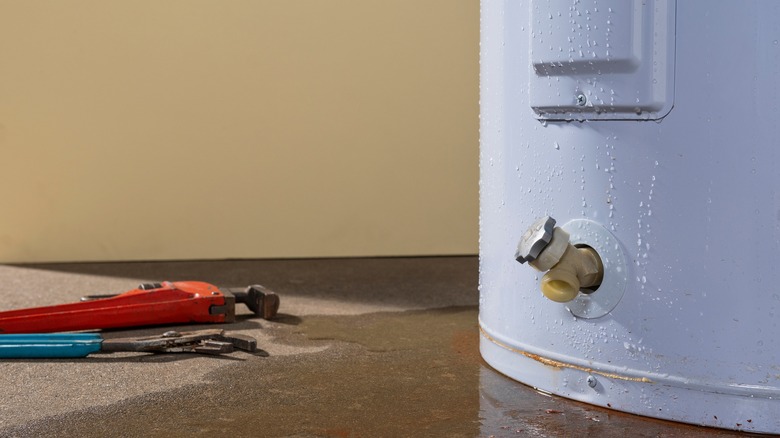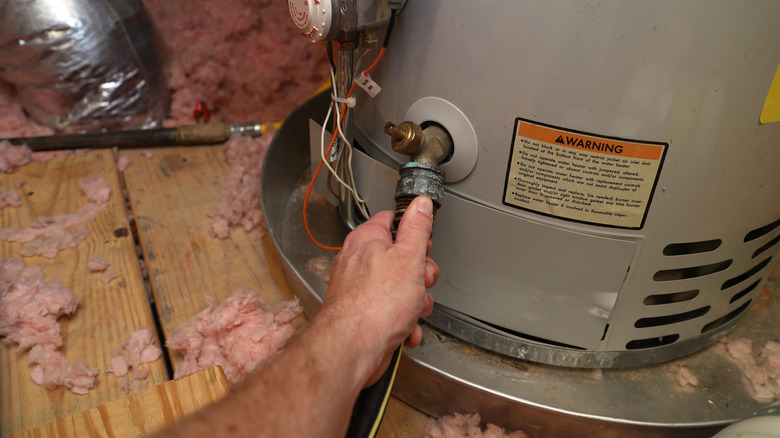Avoid This Common Water Heater Mistake To Avoid Water Damage
Despite how important they are to daily life within a home, water heaters are often fairly simple devices that can even be installed by homeowners. The installation is usually quick work for plumbing pros, especially electric models with wiring already in place. But this ease might be one of the reasons an important complicating aspect of a water heater is neglected. Too often, the drain pan that should be situated underneath the heater to catch any potential water leaks is left off or not properly installed, which can lead to flooding and costly water damage.
These pans — sometimes plastic, but usually made from natural rubber, galvanized steel, or stainless steel — sit under your water heater and are sized just a bit bigger in order to catch any leaks that the heater might develop. The pans are as little as little as 1 ½ inches tall and sometimes no more than 2 inches wider than the water heater, so they are obviously not meant to hold the entire contents of a water heater. Instead, they are designed to dispose of water by draining to grade outside the home or emptying into a floor drain. Some are fitted with sensors and alarms to further reduce the risk of flooding from a leaking water heater by alerting the homeowner to the problem, and sometimes by automatically shutting off the supply of water to the water heater. Not planning for eventual failure is one of the mistakes everyone makes when buying a water heater, but luckily it's an easy error to remedy.
What a properly installed drain pan looks like
Water heater leaks have several common causes that affect the size of a drain pan: a loose pipe fitting, a problem triggering the temperature and pressure (T&P) valve, a damaged water tank, and condensation in the flue (in the case of gas water heaters) or on the outside of the tank. While drain pans often extend only about an inch beyond the heater, the pan should ideally be large enough to catch water from any of these sources. While round pans are the most common by far, larger rectangular pans might help if your water heater's design involves pipe joints that extend well beyond the sides of the heater's outer shell. The drain hole should be positioned so that water can be carried away efficiently by a rigid drain pipe that prevents accidental compression. Water draining outdoors should exit the pipe no more than 6 inches above the ground. Custom cabinets designed to hide your water heater in style should take the drain pan into account too, of course.
Standard round pans are easy to find locally at stores like Home Depot and Lowe's. They average under $20 and are stocked in sizes from 20 to 26 inches. Larger pans, including rectangular models, can be special-ordered from most hardware stores. If you're fitting your water heater with a leak alarm, look for a Wi-Fi-enabled model that can send you a notification even if you're outside of the home.

